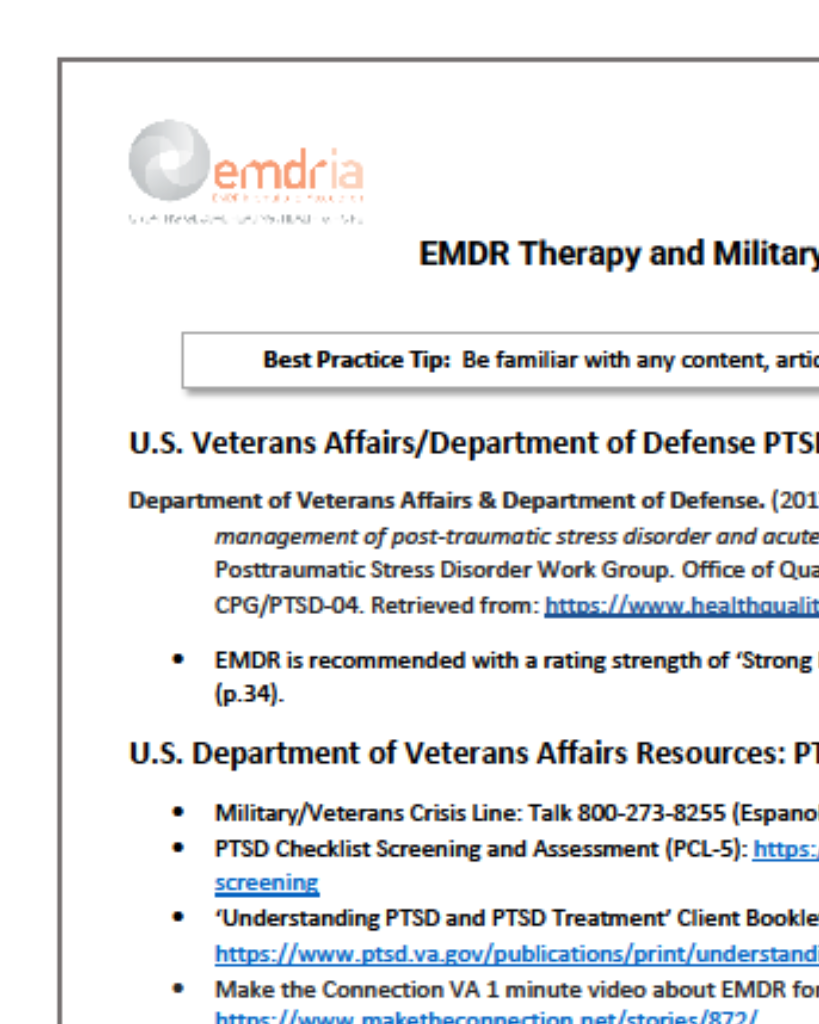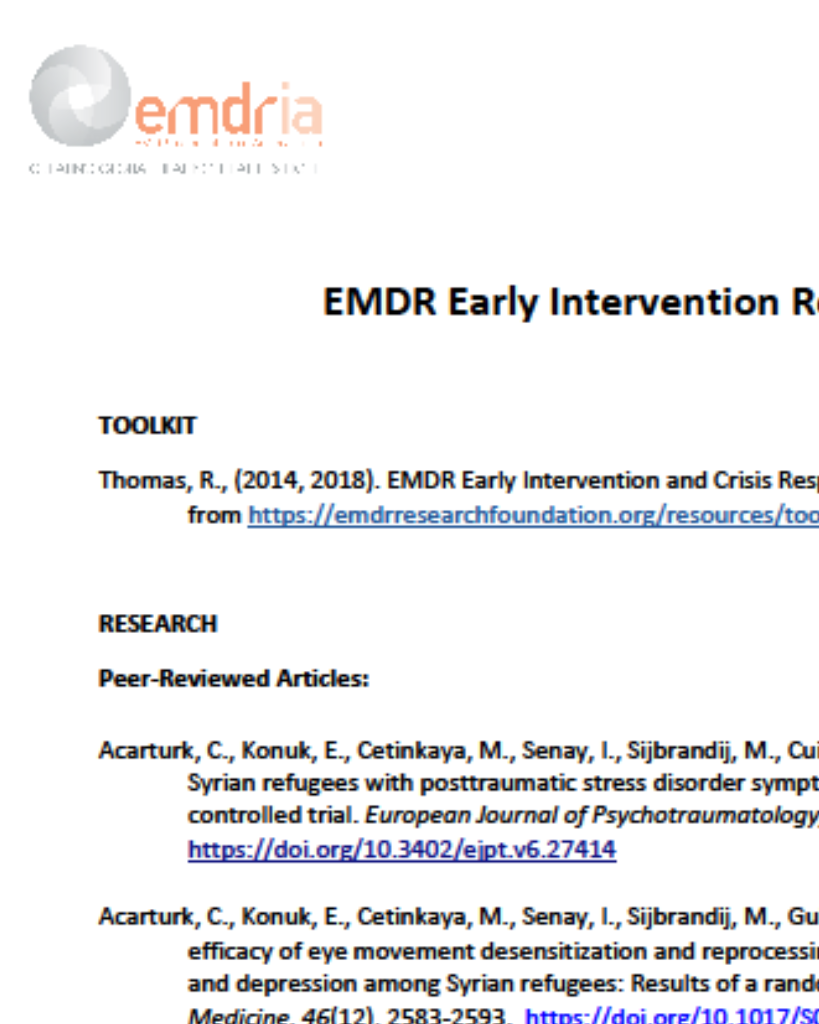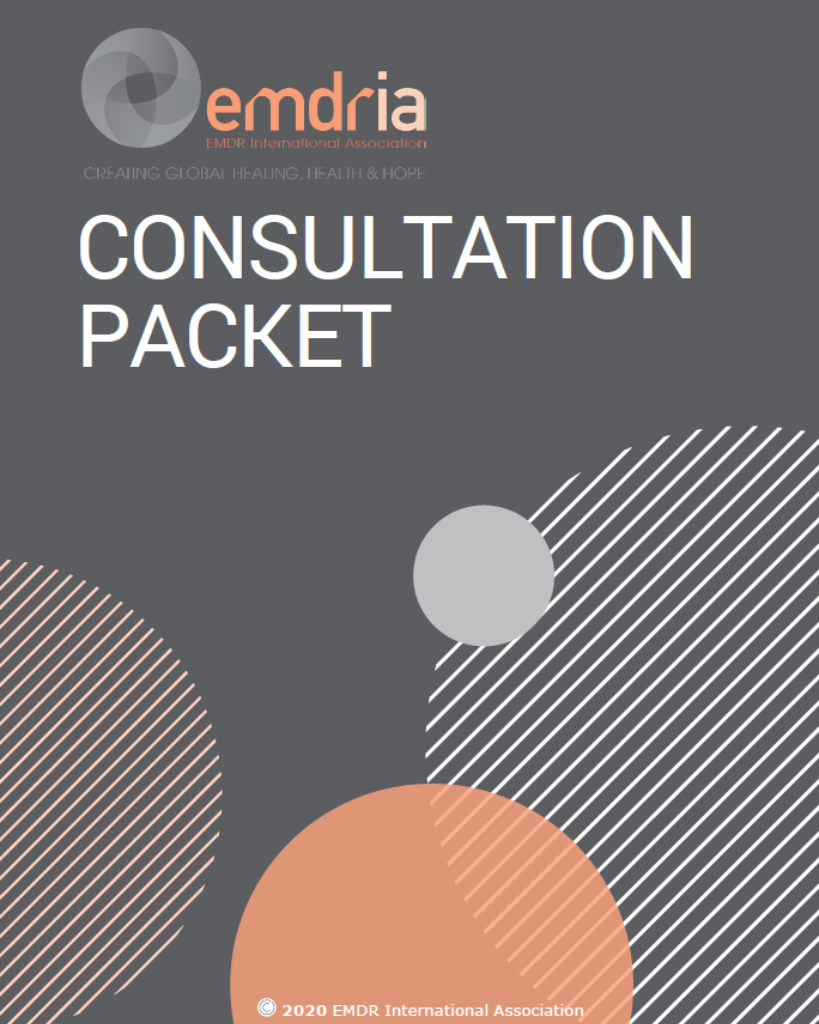Eye movement desensitization and reprocessing (EMDR) in the treatment of war veterans
Two case examples of combat veterans illustrate the ability of EMDR to achieve symptom reduction in a variety of clinical domains.
Article Abstract
“Recent practice guidelines and meta-analyses have designated eye movement desensitization and reprocessing (EMDR) as a first-line treatment for trauma. Eye movement desensitization and reprocessing is an eight-phase therapeutic approach guided by an information-processing model that addresses the combat veteran’s critical incidents, current triggers, and behaviors likely to prove useful in his or her future. Two case examples of combat veterans illustrate the ability of EMDR to achieve symptom reduction in a variety of clinical domains (e.g., anxiety, depression, anger, physical pain) simultaneously without requiring the patient to carry out homework assignments or discuss the details of the event. The treatment of phantom limb pain and other somatic presentations is also reviewed. The ability of EMDR to achieve positive effects without homework indicates that it can be effectively employed on consecutive days, making it especially useful during combat situations.”
—Description from publisher
Article Access
Purchase/Subscription Required
Silver, S. M., Rogers, S., & Russell, M. C. (2008). Eye movement desensitization and reprocessing (EMDR) in the treatment of war veterans. Journal of Clinical Psychology: In Session, 64(8), 947—957. https://doi.org/10.1002/jclp.20510
Date
July 8, 2008
Creator(s)
Steven M. Silver, Susan Rogers, Mark Russell
Client Population
Military/Veterans
Extent
11 pages
Publisher
Wiley
Rights
(c) 2008 Wiley Periodicals, Inc.
APA Citation
Silver, S. M., Rogers, S., & Russell, M. C. (2008). Eye movement desensitization and reprocessing (EMDR) in the treatment of war veterans. Journal of Clinical Psychology: In Session, 64(8), 947—957. https://doi.org/10.1002/jclp.20510
Audience
EMDR Therapists, Other Mental Health Professionals
Language
English
Content Type
Article, Peer-Reviewed
Access Type
External Resource





